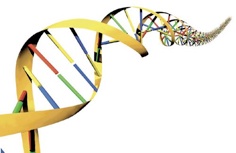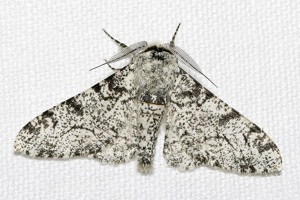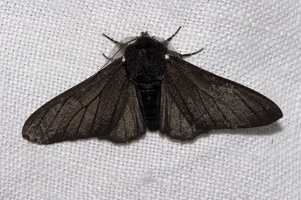Population Genetics

To understand population genetics it’s important to speak the language. Here are some important terms to understand before journeying deeper towards understanding population genetics. Here and throughout this site, newly introduced vocabulary words will be highlighted in purple:
DNA: Deoxyribonucleic acid. DNA is a molecule made up of base pairs that encode genetic information. DNA in humans is made up of over a billion base pairs and is nearly 2 meters long. The main function of DNA is as storage for all the genetic information that makes up an organism’s structure. In general, an enzyme called RNA polymerase will read the DNA and copy it into a similar but slightly different molecule called RNA (Ribonucleic acid). Every three base pairs (codon) corresponds to an amino acid (the building blocks of a protein) or a signal to stop reading. Proteins are produced when the RNA travels to the ribosomes (protein factories in the cell) and the corresponding amino acids to all the RNA’s codons are strung together. DNA has a double helix structure (shown below). The image below is taken from http://www.dnassequencing.com/2011/03/29/sequencing-of-dna-2/
Base Pair: DNA is made up of combinations of four bases: Adenine (A), Guanine (G), Thymine (T) and Cytosine (C). Bonds can be formed between complementary pairs of these (Adenine is complementary to Thymine and Guanine is complementary to Cytosine). The two strands of the double helix of DNA are complementary strings of bases. For example, if a segment of one of the strands reads: AGTACTG, it’s complementary strand will read: TCATGAC.
Protein: As described above, a protein is the result of reading the genetic code stored in DNA and building the structure for which it is a blueprint. Once assembled, proteins have very complex folding patterns (see image below of the protein hemoglobin, which is a key player in carrying oxygen in blood.) This image was created in the protein visualization software Rasmol. Proteins are extremely varied in their functions, but their amino acid sequences affect their folding and interaction with their environment, which have direct implications to the expression of genetic traits.
Locus: A particular location on a chromosome at which the information for a given trait is hosted.
Allele: The different forms of a gene hosted at a given locus. An example of this would be different forms of a gene determining the color of a flower on a plant. The genes corresponding to yellow, purple and red are different alleles that sit at the locus determining color.
Genotype: The genetic makeup of an organism that determines what trait it exhibits; the particular alleles present at the locus of interest (e.g. one purple allele and one red allele from the example of the flower above).
Phenotype: The physical manifestation of a particular genotype (e.g. the color of the flower resulting from the set of alleles present.)
Mutation: A change in the genetic code of an individual that causes a change in a particular trait. This can be the result of a mistake in replicating genetic code and can be deleterious (harmful), advantageous (useful) or neutral (no effect). It’s effect on the organism depends upon the particular mutation that occurs. Mutations can be passed down through generations and either will be bred out or bred into a population slowly.
Selection: If a particular trait is helpful to an organism (allows it to produce more offspring), then it will naturally become more prevalent through several generations of evolution. This process is called selection and will be described in more detail after the introduction of some mathematical concepts.
Population: The group of organisms being studied. In general we will consider a fixed, large population size over many generations. The dynamics of evolution will be different for different population sizes.
This is a short list of vocabulary to know. There will be some more vocabulary introduced throughout this site. For more vocabulary describing genetics see http://www.biology.arizona.edu/vocabulary/mendelian_genetics/mendelian_genetics.html

Population genetics is the theory describing the evolution of the genetic makeup of a population of similar organisms. This site aims to describe the basic mathematics and concepts that govern this process.



Images of the white and black morph variations of the peppered moth. This is an example of different traits found in a single species. We seek to develop the formalism to understand how traits like the color of these moths change in a population over time. Photo credit: http://en.wikipedia.org/wiki/Evolution
Vocabulary
Forces of Evolution
There are three main forces of evolution we will consider. They are:
-
1)Random Genetic Drift
-
2)Mutation
-
3)Selection
These will be described in more detail in future pages. In general, interesting questions to think about will be highlighted in green and math will be highlighted in cyan.